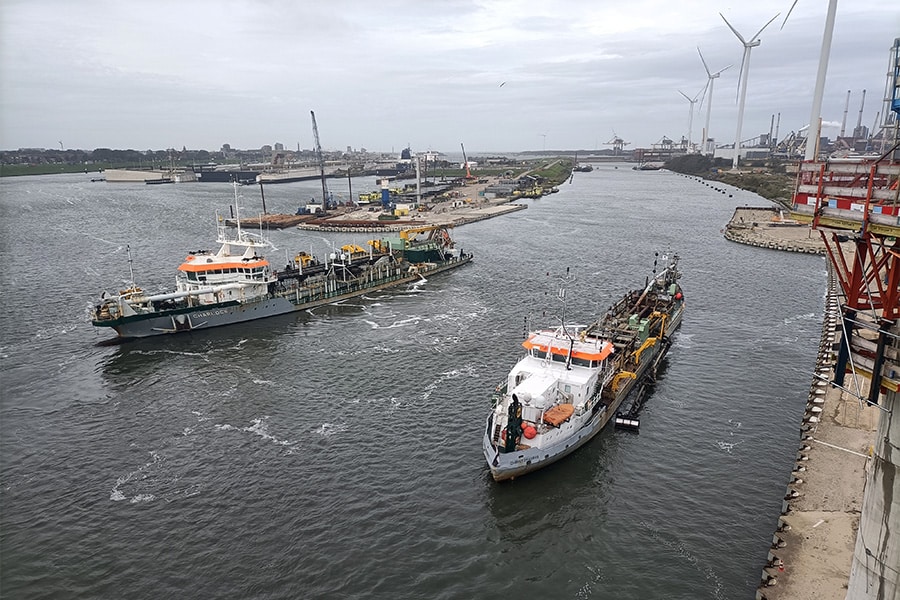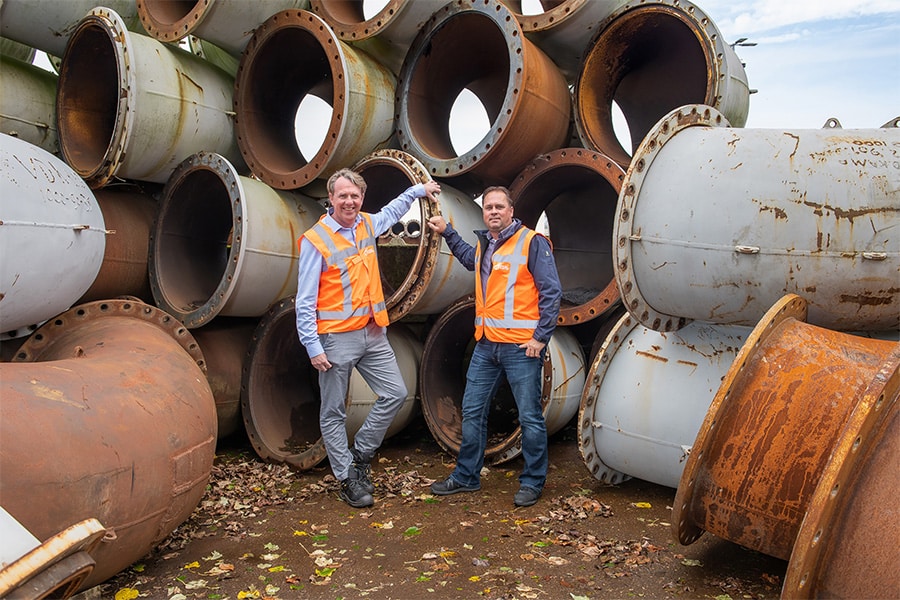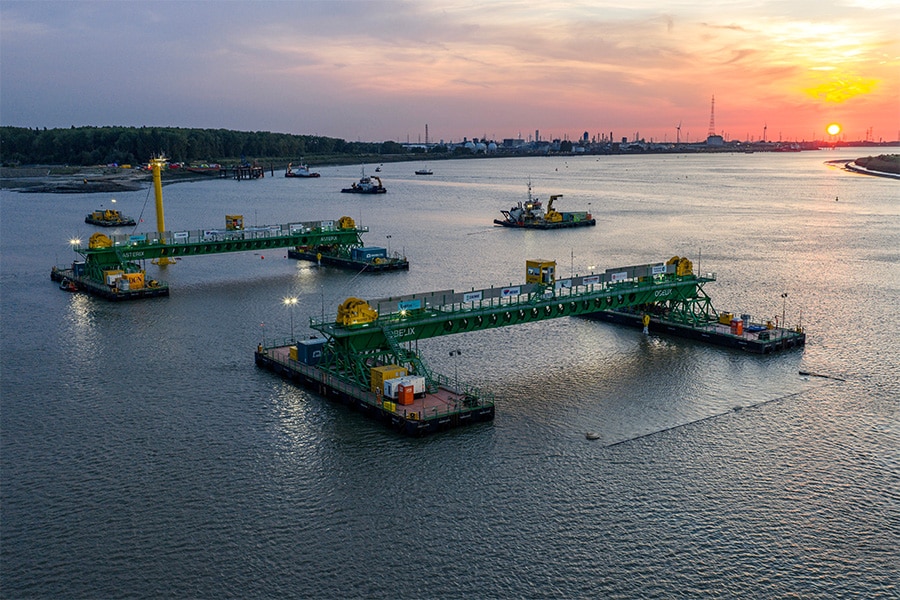
Versatility and expertise in the depths of Sea Lock IJmuiden
From large-scale dredging to detection of possible explosives
Marine construction company Van den Herik of Sliedrecht plays an essential role in Van Hattum and Blankevoort's Selective Withdrawal Sea Lock IJmuiden project. The work it performs here is extremely diverse and testifies to the broad deployability of this company. In this article, foreman Arleen Overwater and project leader André de Kwaasteniet talk about the challenging work that goes beyond large-scale dredging.
Dredging is one of Van den Herik's core activities, and it also performs a lot of dredging work for the Selective Withdrawal of the IJmuiden Sea Lock project for which both hopper dredgers and crane barges are used. "The dredging itself is a project in itself," says André. "In total, no less than 650,000 m3 specie dredged in the Binnenspuikanaal. Prior to dredging, a soil survey was conducted. We then started to remove and safely dispose of some 100,000 m3 of contaminated dredged material, and then proceeded with the remaining 550,000 m3 clean mortar to get going." In addition to large-scale dredging, the company has about 25,000 m2 designed new bottom protection and embankment protection. The sinkers with some 40,000 tons of crushed stone on them will be installed later in the process to a depth of 23 meters. "In the process, we will functionally reuse a substantial part of the stone required, some 6,500 tons, from the existing banks and water bottom. By always thinking about the circular usability of materials, among other things, we avoid unnecessary transport movements."

Suspicious objects
One of the most notable aspects of Van den Herik's work within this project is the approach and investigation of suspect objects in the soil. This is to ensure that there is no risk of explosions during the upcoming work. In total, as many as 188 objects were examined and small explosive material from World War II was found. These, after being secured by Van den Herik's Explosives Detection Department, were detonated by the Explosives Clearing Service Defense (EOD).
Logistical challenge
Another unexceptional job within this project, was the removal of five mooring chairs, each 17 meters high and nearly 11 meters in diameter. These concrete behemoths were transported by water from IJmuiden to a demolition site in Rotterdam, after an extensive market approach for functional reuse unfortunately did not yield the desired result. Van den Herik drew up a safe loading and transport plan for this, and then completed this assignment in collaboration with HAPO Ridderkerk. André: "Quite a complex logistical operation that certainly provided the necessary challenges."
Without limitations, always solutions
What characterizes this project is the constructive cooperation with all parties involved. "We work together multidisciplinary, without limitations where together we always come up with solutions," Arleen said. "Moreover, we face major challenges, such as dredging at a depth of 27 meters in two construction pits of 250 m2, with very limited space for our equipment. After dredging, we apply a gravel layer at this depth with limited berthing tolerances. Clients constantly challenge us to work safely and very accurately, even at 27 meters below the water table."




